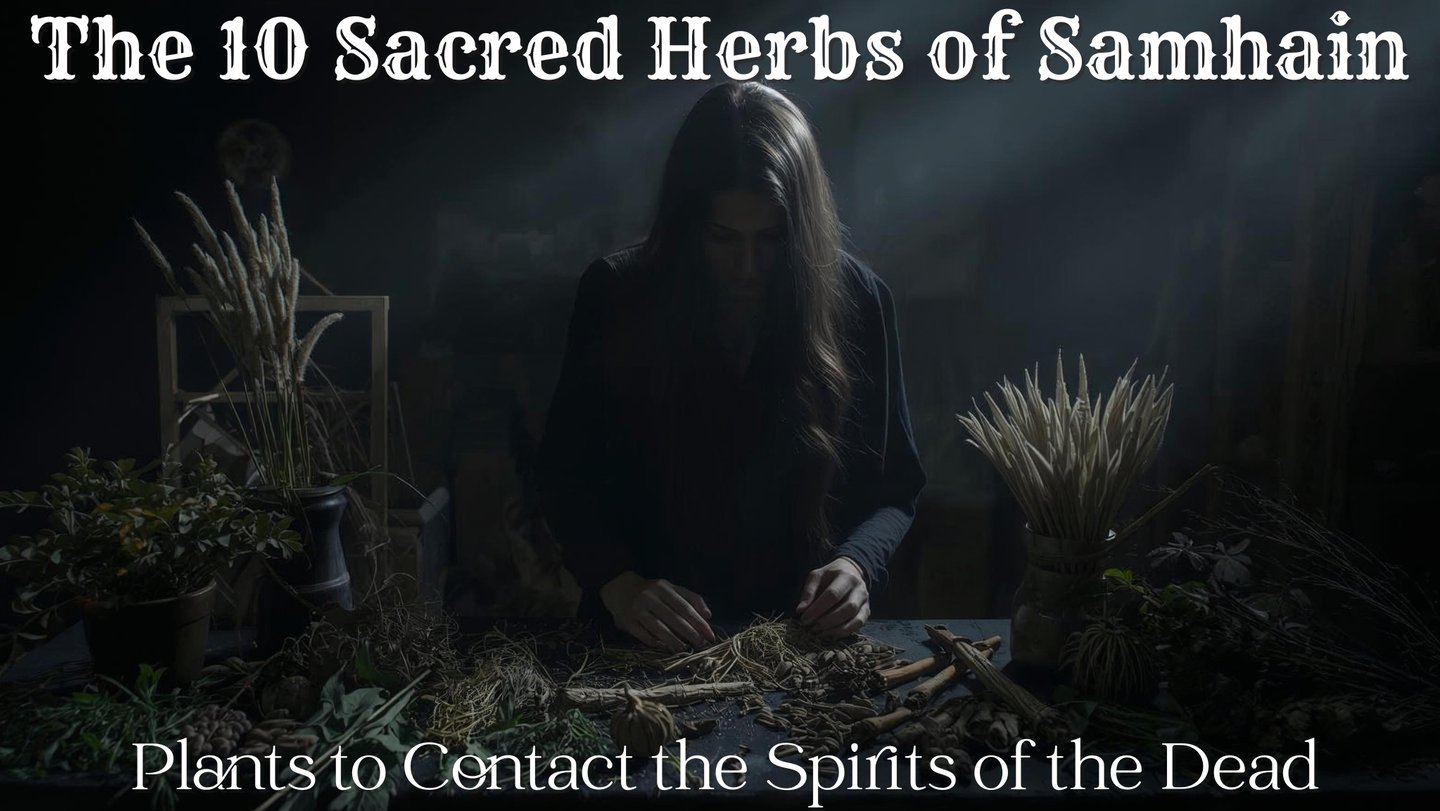As the Wheel of the Year turns to Samhain (October 31st – November 1st), the veil between the worlds thins, and spirits are said to walk among us. Known as the Witches’ New Year, Samhain is a time for honoring ancestors, seeking guidance from the Otherworld, and performing divination. Herbs, sacred allies of witches and healers, play a vital role in these practices. Their fragrance, smoke, and energy create bridges between realms, inviting communication with spirits of the dead.
Below are 10 sacred herbs of Samhain, each with its own lore, magic, and spiritual purpose.


Mugwort is the quintessential herb of divination and prophecy. Burned as incense or brewed into tea (with caution), it heightens psychic awareness, making it ideal for Samhain scrying, tarot, or dreamwork.
Use: Burn mugwort to invite visions or place beneath your pillow to receive messages in dreams.
Closely linked to necromancy and spirit contact, wormwood opens the gates to the unseen. Its smoke calls to spirits, aiding in summoning or ancestral rituals.
Use: Burn in small amounts during rituals to invite the dead, but always with protective herbs like rosemary.
The yew tree, long associated with graveyards, represents death and rebirth. Sacred to the Druids, it was believed to hold the souls of the departed.
Use: Place a sprig of yew on your altar to connect with ancestors and cycles of eternity. Do not ingest—yew is poisonous.💀
Rosemary honors memory, making it a perfect offering to ancestors. Its protective qualities ensure that only benevolent spirits draw near.
Use: Place rosemary on your ancestor altar or burn it to purify your space before spirit work.
Bay leaves have long been used to induce visions and connect with divine wisdom. They guard against malevolent energies while opening channels of insight.
Use: Write wishes or questions for the dead on bay leaves and burn them in your Samhain fire.
Juniper is a powerful herb for banishing negativity and ensuring that spirit contact is safe. Its smoke is cleansing yet also acts as a key to the Otherworld.
Use: Burn juniper in your ritual fire or incense to create a protective barrier around your circle.
The apple is a sacred Samhain fruit, symbolizing immortality and wisdom. Cutting it crosswise reveals a star-shaped pentacle within, linking it to the Otherworld.
Use: Place apples on your altar as offerings to the dead, or bury one outside as a gift to wandering spirits.
Once called “Witch’s Herb,” hellebore was believed to make the invisible visible. It is bound to the underworld and spirit sight.
Use: Place hellebore (dried or symbolic representation) on your altar for Samhain rites. Highly toxic—do not ingest or burn.💀
Cedar is known for connecting the living with the spirits of ancestors. Its smoke sanctifies ritual space and invites ancestral guidance.
Use: Burn cedar chips as incense to bless your altar and honor your ancestors.
Mandrake has a long legend as a root that screams when pulled from the earth, bridging the worlds of the living and the dead. Associated with protection and spirit magic, it is a potent Samhain ally.
Use: Keep a mandrake root on your altar as a spirit talisman. Poisonous—handle carefully.💀
Final Thoughts
Samhain’s sacred herbs act as keys, bridges, and guardians as we walk between the worlds. From the dream-giving mugwort to the soul-keeping yew, each plant carries whispers of the ancestors and guidance from the unseen.
This Samhain, may your rituals be filled with wisdom, your spirits guided with love, and your path illuminated by the herbs of old.
Blessed Samhain.


